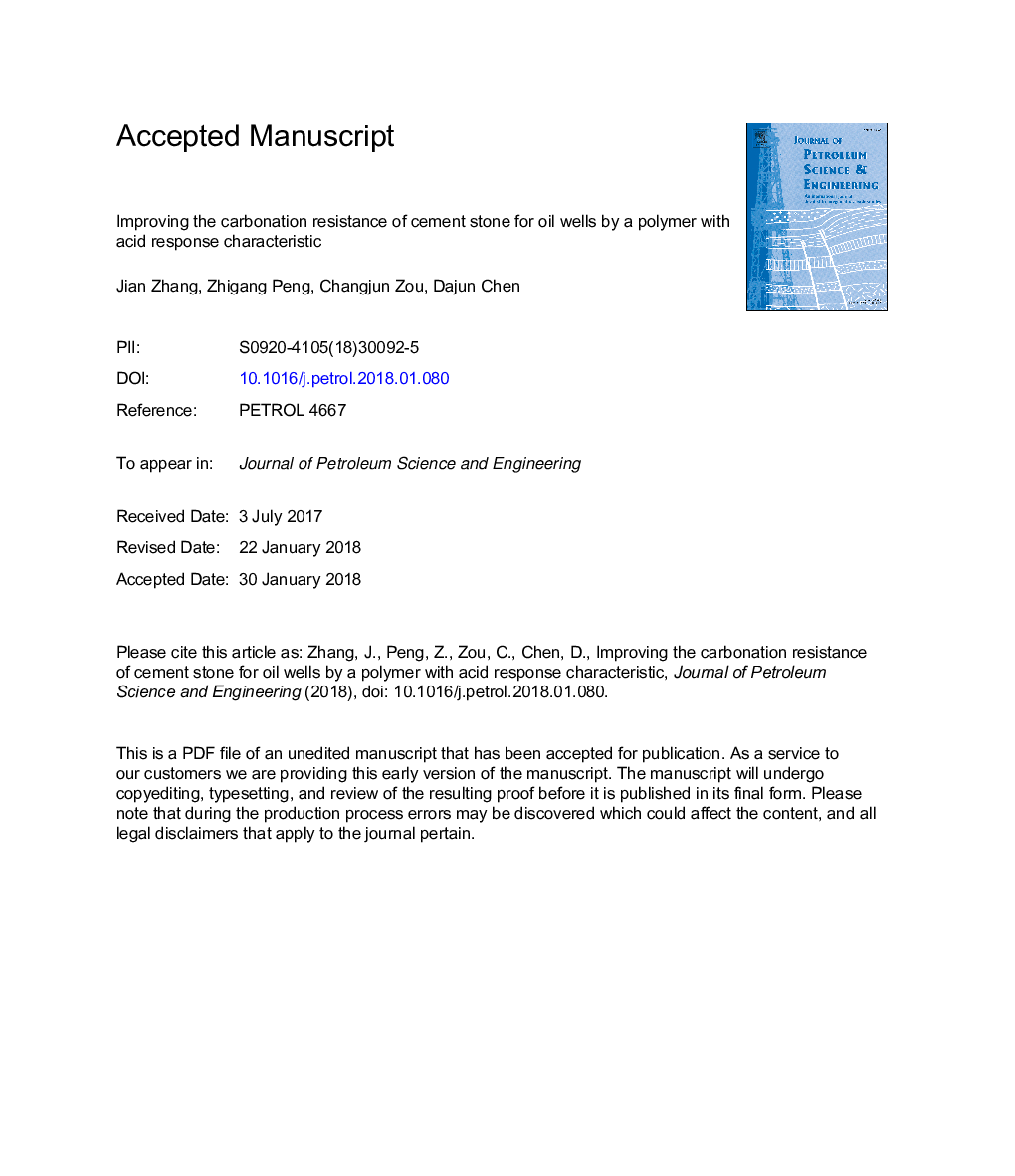| Article ID | Journal | Published Year | Pages | File Type |
|---|---|---|---|---|
| 8125217 | Journal of Petroleum Science and Engineering | 2018 | 31 Pages |
Abstract
The influences of acid responsive polymer (ARP) on the carbonation resistance of oil well cement were studied by low field nuclear magnetic resonance (NMR), scanning electron microscope (SEM) and X-ray diffraction (XRD), and the mechanism of ARP improving the cement's carbonation resistance was also revealed. The results shown that mixing ARP into cement can significantly decrease the increasing phenomenon of carbonation depth and porosity in cement stone carbonized for a long time, at same time, ARP can weaken the damage for hydration products and microstructures of cement stone from carbon dioxide due to the layer of membrane materials formed on the surface of cement stone encountered acid medium. With the aid of scanning electron microscope (SEM), X-ray diffraction analysis (XRD) technologies, the carbonation resistance mechanism of cement stone improved by ARP was revealed and as follows: (1) Increasing the thickness of the polymer hydration layer being formed on the surface of the cement particles and reducing the contact opportunity between hydration products and corrosion medium; (2) Forming polymeric membrane substance in carbonized environment and blocking the infiltration channels of corrosion medium.
Related Topics
Physical Sciences and Engineering
Earth and Planetary Sciences
Economic Geology
Authors
Jian Zhang, Zhigang Peng, Changjun Zou, Dajun Chen,
